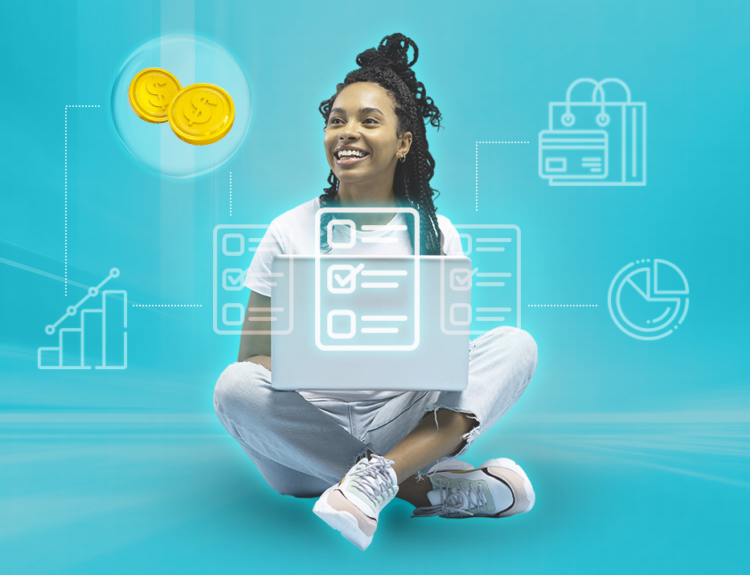Digital wallets are quickly replacing cash, with over 4.3 billion users globally in 2024*. This number is projected to rise to 5.8 billion by 2029. This is because a lot of street vendors and local businesses are using QR codes to adopt cashless payments. And why would they not go for it? It offers incredible convenience, after all.
But are digital wallets really all about good news? Or do they have any drawbacks? Let us look at why online payments are growing.
From Piggy Banks to Phone Taps: The Evolution of Digital Wallets
Not so long ago, managing money meant visits to the bank. You also had to keep track of your paper receipts. Then came online transactions – suddenly, you could pay your bills and shop from your computer. Fast forward to today, your phone is your wallet and your shopping assistant. Let us look at this timeline in detail –
- 2000s: Online banking became popular. This allowed people to pay their bills and shop online.
- 2010s: The introduction of digital wallets like PayPal, Apple Pay, and Google Pay.
- Today: Smartphones use NFC technology to enable tap-to-pay. There are also QR codes that allow instant transfers.
However, every country has its own digital systems. In the U.S., cards are still very popular, but digital wallets are catching up fast. Meanwhile, online payments are a big part of the local economy in India and Sweden. But why are they so popular? This is because of convenience.
Convenience Is King: Why We’re Embracing Cashless Payments
- Speed: You can tap your phone to make instant payments. This helps you avoid fumbling for change or cards.
- Anywhere payments: With digital wallets, you can pay at markets or online with ease.
- Track spending: You have instant access to transaction history. This can help you manage your expenses.
- Split bills: Online wallets allow you to quickly send money to friends or family without any hassle.
Digital wallets can have some shortcomings. Such as –
- Power Outages: If networks go down, cash is your back.
- Privacy Concerns: Digital transactions will leave a trail, unlike anonymous cash.
- The “Invisible Money” Effect: A study done by Carnegie Mellon University shows that swiping feels less real than handing over cash. This can lead to overspending.
Despite the convenience part, there is still a huge demographic that is afraid to use digital wallets. This is mainly due to some myths.
Busting Security Myths: Are Digital Wallets Really Safe?
Many people worry that digital wallets might be riskier than carrying cash and cards. But, in reality, online payment platforms offer stronger security features. They are not like physical cards that can be stolen or skimmed. Digital wallets encrypt your payment information and use unique transaction codes for each purchase. So, even if someone steals your phone, biometric locks and PINs can prevent unauthorized access.
Common Misconceptions
|
Myth |
Reality |
|
Digital wallets are easy to hack |
Strong encryption and authentication make hacking very difficult. |
|
Payments can be made without approval |
Every transaction requires user authentication. |
| Digital wallets are unregulated |
Many countries have strict regulations protecting users. |
The Social Side: Who Benefits and Who Might be Left Behind
Many people enjoy the perks of a cashless society. However, not everyone has equal access or comfort with digital payments.
- Younger generations can adapt quickly to mobile payment apps.
- Older adults may need some assistance in learning new technology.
- People without smartphones or internet access risk being excluded.
Do you want to share your thoughts on this? Visit our platform at The Panel Station to share your insights. You can participate in fun surveys and earn rewards. This can help you shape the future of payment technologies!
How Going Cashless Reshapes Our Spending Psychology
That coffee that you bought with a quick tap? Or the $5 monthly app subscriptions that you have taken? They all add up fast. Digital payments make it dangerously easy to lose track of money. Here is how cashless payments are quietly changing our financial behavior –
1- The Subscription Trap
Auto-renewals are the silent budget killers. Close to a third of users underestimate how much they pay on a subscription by $100 to $199 each month. Why? Because –
- No physical reminders: Unlike cash, digital payments happen invisibly.
- “Free Trail” ambushes: That 7-day trial that you forgot? It is $14.99/month now. Studies show that around 42% of subscribers forgot that they are still paying for a subscription they no longer use.
2- The Just $1 Illusion
Digital wallets can turn spending into a game –
- Tipping creators because that “Support Me” button guilt-trips you.
- In-app purchases (“It is just one virtual coin!”)
- Micro-donations (streamers, charities, etc.)
All of these cashless payments can feel trivial. This is until you realize that you have dropped $50/month on digital payment.
How You Can Thrive In a (Nearly) Cashless World
1- The “Don’t Put All Your Eggs In One Digital Basket” Rule
- Why? Tech fails. Blackouts happen. Your phone might die right when you need to split the bill.
- Smart Move: Keep bills like $5 or $20 in cash hidden in your wallet or car for emergencies. It can be handy for tips or in flea markets.
- Teach Your Family
You need to teach your family members how to make online payments.
- Start Simple: Show the older adults in your house about simple payments.
- Safety First: Show them how to use Face ID/PIN codes. The majority of seniors worry about digital payment scams. So, you need to help them spot phishing emails.
Your Opinion Shapes the Future of Digital Payments
Tech companies rely on real people to improve online transactions. Have you ever wondered why payment apps keep on evolving? This is because of feedback from users like you.
So, do you want to influence the future of cashless payments and earn rewards for it? Our platform at The Panel Station connects consumers with companies developing payment tech. So, share your thoughts in quick surveys and get rewards for it.
Final Thoughts
Digital payments are convenient and fast. But having a smart strategy can help you remain in charge. It helps to balance technology with cash backups. You also have to be aware of fees. As we head towards a cashless era, being aware ensures you enjoy the advantage without the risk.
FAQs
1- What should I always have as backup payment options?
You need to keep a physical debit or credit card. Also, carry some cash with you. They can help you out when your phone dies. It can also be helpful when systems are down.
2- How transaction fees differ when using traditional payment methods versus digital payment methods
Fees differ according to provider and location. Paying your friend or at shops may cost the original amount in digital wallets. However, these platforms may have a charge for international use or cryptocurrency conversions. It can help if you check your provider’s terms.
3- Are there particular buys where cash still offers benefits over digital alternatives?
Yes. Cash is preferred for extremely small purchases. It can also be useful for rural areas with limited connectivity or for sensitive and private payments.
4- How can I help older family members transition safely to digital payment methods?
You can start by introducing simple mobile payment apps and setting up security features. You can also practice transactions together. Encourage them to use strong passwords and enable biometric authentication.
5- What if I lose my phone?
Immediately lock payments via your device’s tracking app. After that, contact your bank to suspend linked cards. Most wallets let you remotely disable payment access within minutes.









